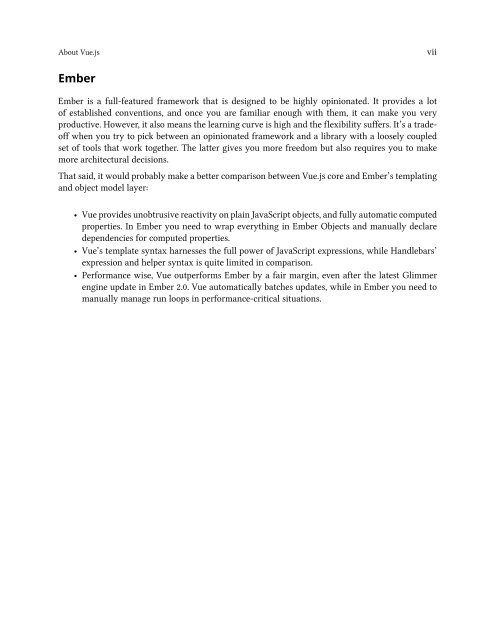vuejs
Create successful ePaper yourself
Turn your PDF publications into a flip-book with our unique Google optimized e-Paper software.
About Vue.js<br />
vii<br />
Ember<br />
Ember is a full-featured framework that is designed to be highly opinionated. It provides a lot<br />
of established conventions, and once you are familiar enough with them, it can make you very<br />
productive. However, it also means the learning curve is high and the flexibility suffers. It’s a tradeoff<br />
when you try to pick between an opinionated framework and a library with a loosely coupled<br />
set of tools that work together. The latter gives you more freedom but also requires you to make<br />
more architectural decisions.<br />
That said, it would probably make a better comparison between Vue.js core and Ember’s templating<br />
and object model layer:<br />
• Vue provides unobtrusive reactivity on plain JavaScript objects, and fully automatic computed<br />
properties. In Ember you need to wrap everything in Ember Objects and manually declare<br />
dependencies for computed properties.<br />
• Vue’s template syntax harnesses the full power of JavaScript expressions, while Handlebars’<br />
expression and helper syntax is quite limited in comparison.<br />
• Performance wise, Vue outperforms Ember by a fair margin, even after the latest Glimmer<br />
engine update in Ember 2.0. Vue automatically batches updates, while in Ember you need to<br />
manually manage run loops in performance-critical situations.


